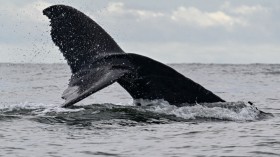Once thought to be passive drifters unable to defy even the weakest currents, phytoplankton, it turns out, can swim in most cases - an activity they perform in order to optimize light exposure, avoid predators and even move closer to their peers. Now, adding to this niche body of research, scientists at Massachusetts Institute of Technology and Oxford University have shown that the mobility of phytoplankton also helps them in determining their fate in ocean turbulence.
Rather than acting to distribute them evenly - as physics would demand of small particles mixed into a fluid - the individual vortices that make up ocean turbulence are like social mixers for phytoplankton, bringing similar cells into close proximity and potentially enhancing sexual reproduction and other ecologically needed events, the scientists found.
The study, published in Nature Communications, describes how, on the scale of millimeters, phytoplankton caught in a watery vortex form highly concentrated patches at the center of the swirl, a process that often repeats itself. As a result, the microorganisms are constantly on the move from social mixer to social mixer.
Such findings are counterintuitive since turbulence is the most efficient means of mixing two substances evenly (think of mixing milk into coffee). Thus, in the case that the microorganisms were unable to swim, they would almost assuredly be found in homogenous, thin dispersals across the water - a fact that is overwhelmingly not the case, according to the new study.
"Based on our intuition of turbulence and turbulent mixing, we expected homogeneity to reign," Roman Stocker, an associate professor of civil and environmental engineering at MIT who led the study, said in a press release. "Instead, the phytoplankton surprised us by forming highly concentrated clusters of cells - it's turbulent un-mixing."
"For the phytoplankton," he explained, "this is a vehicle to effectively find cells of the same species without any sensory information on each other's location or the need to invest in costly means of chemical communication."
This patchiness is not without its drawbacks, however. Phytoplankton, the photosynthetic microbes of the sea, form the base of the ocean food web and clustering makes them easy prey. Furthermore, this close proximity to like cells can increase competition among the microorganisms for sparse nutrients.
Despite these downsides, these unicellular microorganisms have something that seems to work well for them, the scientists ultimately concluded.
"While patchiness increases the chance of a fatal encounter with a predator, it also increases the chance of finding other phytoplankton cells, which is needed to form resilient cysts that can survive harsh winter conditions," said William Durham, the paper's first author and a lecturer at Oxford University who began working on this study as a doctoral student at MIT. "This mechanism suggests phytoplankton might tune their motility to have the best of both worlds, minimizing patchiness when there are a lot of predators around while maximizing patchiness when the time is ripe for cyst formation."
© 2024 NatureWorldNews.com All rights reserved. Do not reproduce without permission.





